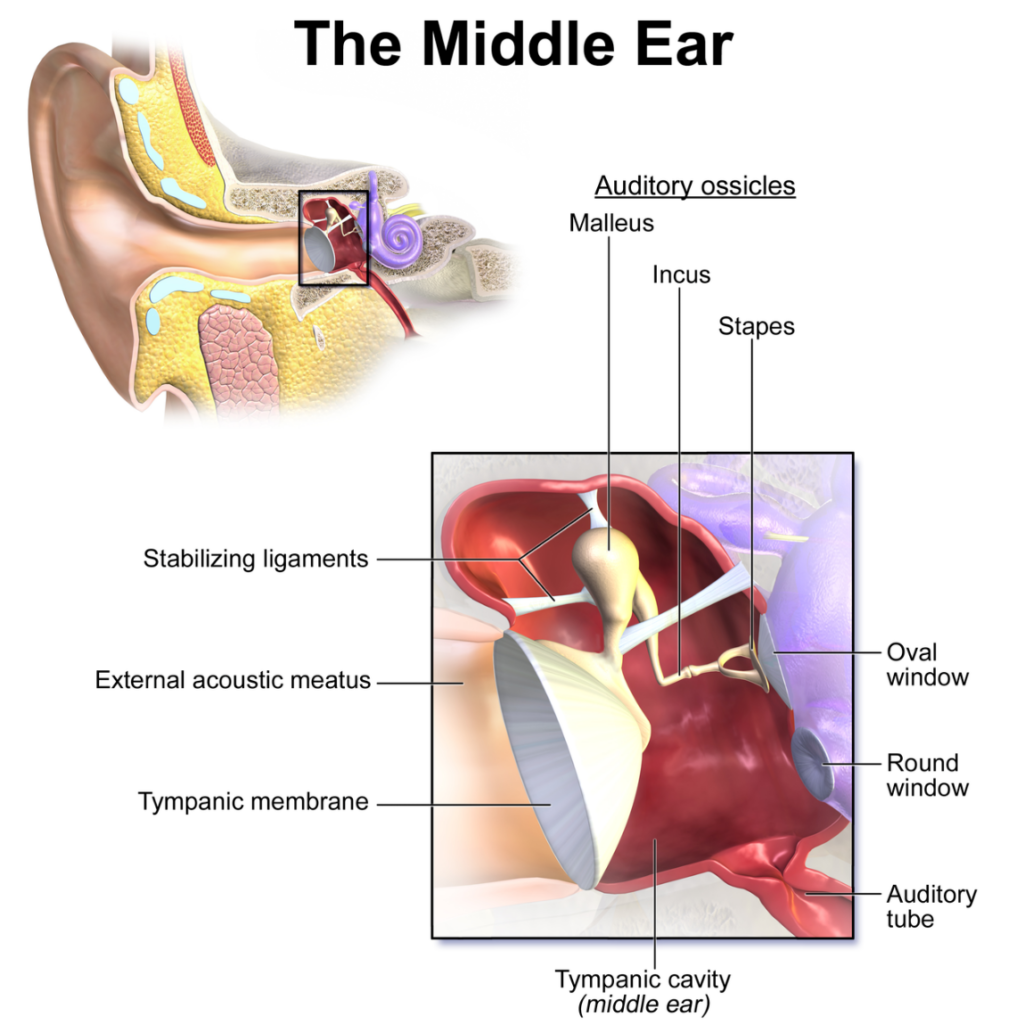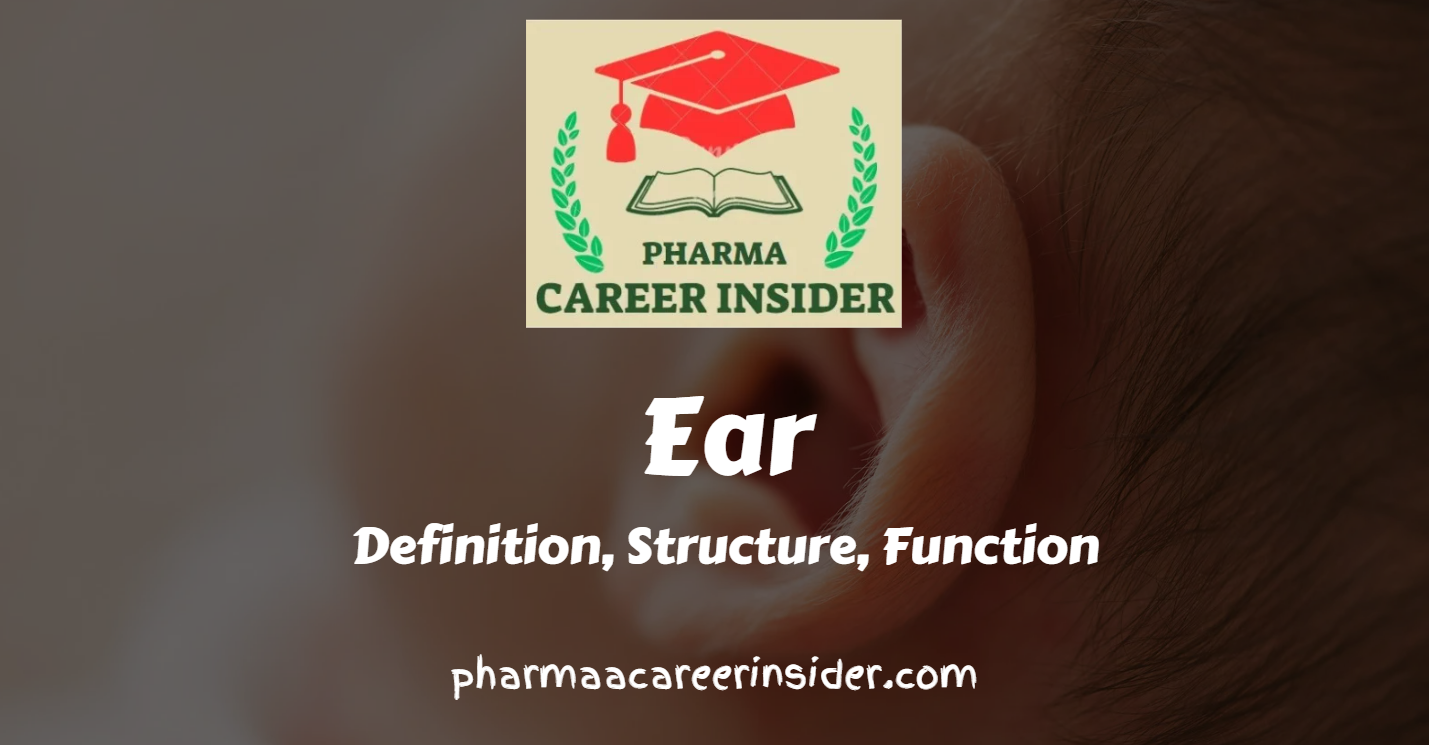The ear is a complex organ responsible for hearing and balance. It consists of three main parts: the outer ear, the middle ear, and the inner ear, each with distinct structures and functions. Here’s a detailed note on the structure and functions of the ear:
1. Outer Ear
The outer ear consists of the following structures:
Pinna (Auricle): The visible, external part of the ear that helps collect sound waves and direct them into the ear canal.
Ear Canal (External Auditory Canal): A narrow, tubular passage that carries sound waves to the eardrum.
Functions of the Outer Ear:
– The pinna collects sound waves and funnels them into the ear canal.
– The ear canal helps amplify and direct sound waves toward the middle ear.
2. Middle Ear
The middle ear is located behind the eardrum and contains the following components:
Eardrum (Tympanic Membrane): A thin, tightly stretched membrane that vibrates in response to sound waves.
Ossicles: Three small bones called the malleus (hammer), incus (anvil), and stapes (stirrup), which transmit vibrations from the eardrum to the inner ear.
Eustachian Tube: A narrow tube that connects the middle ear to the back of the throat, helping to maintain air pressure in the ear.

Functions of the Middle Ear:
– The eardrum vibrates when it is struck by sound waves, amplifying the vibrations.
– The ossicles transmit these vibrations to the oval window of the inner ear.
– The Eustachian tube helps equalize air pressure between the middle ear and the external environment.
3. Inner Ear
The inner ear is the most complex part of the ear and is responsible for both hearing and balance. It contains the following key structures:
Cochlea: A spiral-shaped, fluid-filled structure that houses the sensory cells responsible for hearing. Sound vibrations in the cochlea stimulate these cells, sending electrical signals to the brain.
Vestibular System: This system, consisting of the vestibule and semicircular canals, helps maintain balance and spatial orientation.
Auditory (Vestibulocochlear) Nerve: This nerve carries signals from the cochlea and vestibular system to the brain for interpretation.
Functions of the Inner Ear
The cochlea converts sound waves into electrical signals that the brain can process as sound.
The vestibular system maintains balance and provides information about the body’s position in space.
Common Ear Disorders
1. Otitis Media: An infection or inflammation of the middle ear, often causing ear pain and hearing loss.
2. Hearing Loss: Hearing loss can result from various causes, including age-related changes (presbycusis), noise exposure, or diseases.
3. Tinnitus: Tinnitus is a ringing, buzzing, or hissing sound in the ears when no external sound is present. It can be related to hearing loss or other underlying conditions.
4. Meniere’s Disease: A disorder of the inner ear that can lead to vertigo, hearing loss, and tinnitus.
5. Earwax Blockage: Accumulated earwax can block the ear canal, causing discomfort and hearing problems.
6. Labyrinthitis: Inflammation of the inner ear can lead to vertigo, nausea, and loss of balance.
7. Cholesteatoma: An abnormal skin growth in the middle ear can cause hearing loss and chronic ear infections.
8. Conductive and Sensorineural Hearing Loss: These conditions relate to problems in the middle or inner ear and can be caused by various factors.

